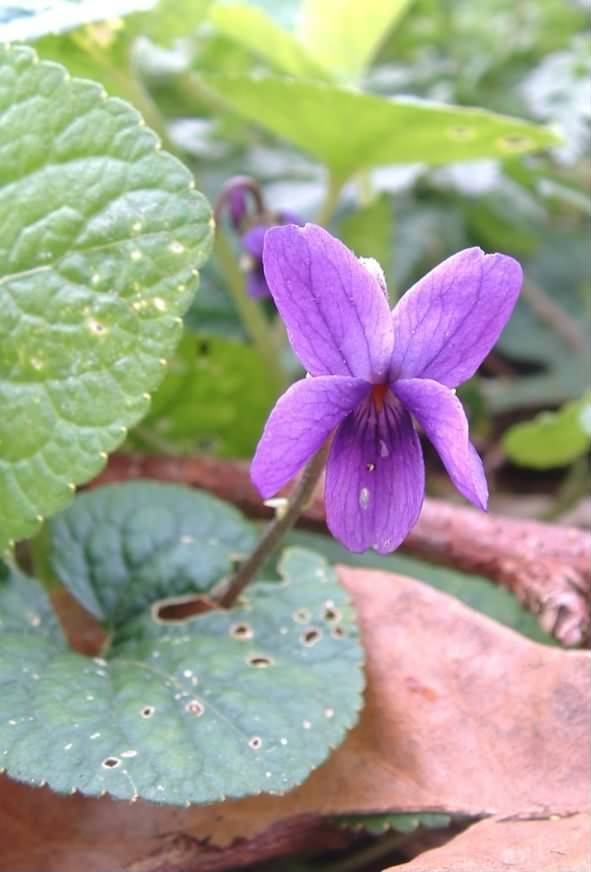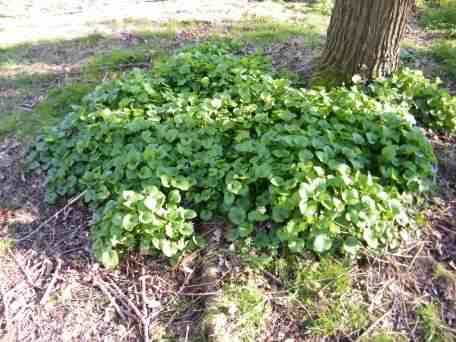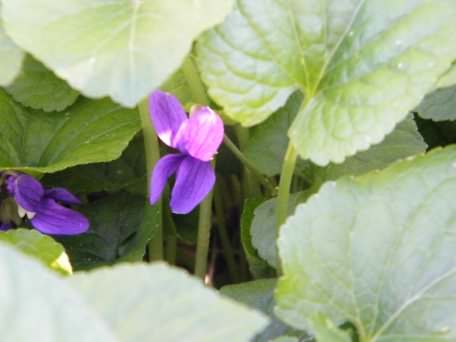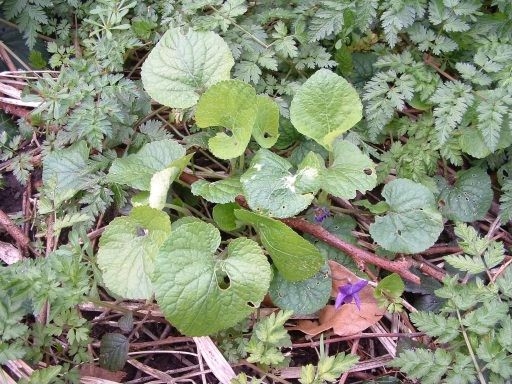
Photo ©2005–
Click for a larger image
More photos
Photo ©2005–
Click for a larger image
Sweet Violet - Viola odorata
Family - Violaceae
Also known as - Ordinary violet, Trayman, Common Blue Violet
Parts of this plant are toxic
Growing to a height of about 15cm (6in), Sweet Violet is a perennial herb of woods and hedgerows, mostly on calcareous soils and is widespread and locally common in England and Wales. The long–stalked leaves are rounded in spring becoming much larger and heart–shaped in the summer. Violet or white flowers appear February to May. A European native but naturalized throughout North America, they can be found growing in most soils or situations. The heart shaped leaves often with scalloped or slightly serrulate edges are dark green, smooth or sometimes downy underneath, and grow in a rosette at the base of the plant. roots are creeping and send out runners. Flowers of five petals appearing early March to June, vary in colour from deep purple or blue to pinkish (occasionally even a whitish yellow) depending on soil and available light. Occasionally they will flower again in late summer. The plant has thick and scaly underground stem, with rooting runners. See also Hairy Violet.
Ancient Greeks considered the Violet a symbol of fertility and used it in love potions. Pliny recommended that a garland of them be worn about the head to ward off headaches and dizzy spells. The flowers are either used as an infusion in water or as a syrup. its recorded history dates back to the ancient Greeks. Athens adopted it as its symbol and, according to legend, sweet violets grew wherever Orpheus walked. Many cultures celebrate its arrival in spring attaching symbolic traits to the plant. All parts of the plant contain the alkaloid Violine. Botanical description for Odorata.
BCP do not advise or recommend that Sweet Violet – Viola odorata is eaten or used as an herbal remedy. The roots and seeds of this plant are toxic and should not be eaten. Sweet Violet has a long history of use as a cough remedy and especially for the treatment of bronchitis. The aboriginal tribes of India are reported to have used the plant as a cancer cure. It may also be used to aid in the treatment of upper respiratory catarrh and for urinary infections. The entire plant is edible and the flowers are rich in vitamins A and C. They are often candied for use in confections and when fresh can be used in salads, along with the leaves.
 All Photos ©2005– |
 Close window |
 Click any photo for a larger image |
Site design ©1999– Brickfields Country Park - Privacy -